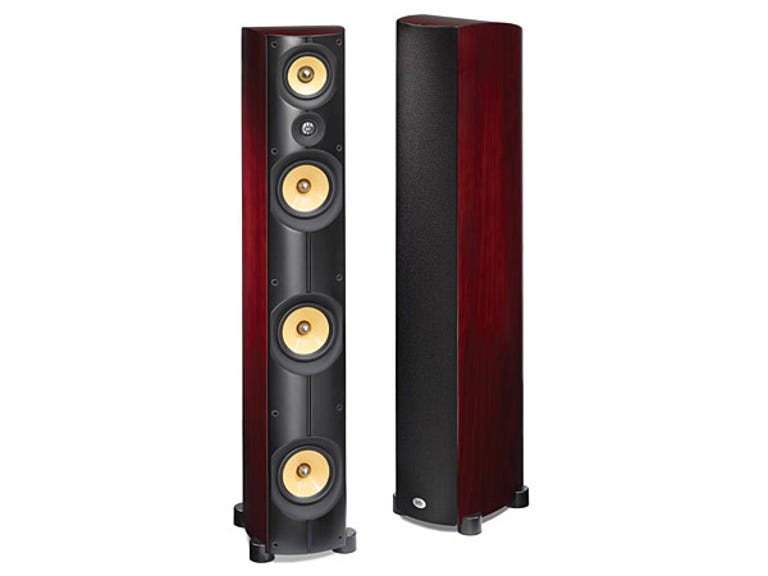 Why You Can Trust CNET
Why You Can Trust CNET PSB Imagine T2 stereo loudspeakers review: PSB Imagine T2 stereo loudspeakers
At the lower end of the high-end price range, the PSB Imagine T2 stereo loudspeakers deliver high-quality sound, limited only at the very highest of volume levels.
System
The PSB Imagine T2 stereo loudspeakers conform, stylistically and engineering-wise, to the current conventions. They are very slim (just 190mm across the widest part of their curved bodies), and, rather than having one big woofer, they have several small ones. Three, in fact; each 133mm (5.25 inches in the old system).
The Good
The Bad
The Bottom Line
These bass drivers are lined up vertically, of course, but are quite widely spread on the bottom three quarters of the enclosure. The reason is that each has its own separate enclosure within the case. The cabinets are bass-reflex designed, so there are three ports on the rear, one for each of the three internal enclosures. Each speaker comes with one rubber plug, which you can use to close one of the ports to tune the bass (plugging the port reduces the peak output significantly, but also tends to extend the deeper bass).
At the top of the enclosure is a 102mm mid-range driver, and just underneath it and above the uppermost bass driver is a 25mm titanium dome tweeter. With the speaker mounted on the supplied spikes (which screw into small side extensions at the bottom of the speaker), the centre of the tweeter is about 860mm from the ground, which is a little below ear level for a normal couch-seated listener.
The four larger drivers all look similar at first glance, except for size, but they are, in fact, quite different. Unlike the mid-range, the three woofers have fixed "phase plugs". That is, while the surrounding cone of the woofers vibrates, these machined cones remain stationary. The purpose of these is to reduce distortion caused by the higher frequencies produced near the centre of the cones from interfering with each other.
A removable cloth grille covers the front of each loudspeaker, and gives exceptional protection, since it was backed by a perforated metal grille.
Sound
At low, medium and reasonably high levels, these loudspeakers produced a well-balanced and highly detailed sound. They were especially good at revealing the reverberant space around the massed instruments in classical music and bringing out all the detail. They were well matched, too, giving precise and well-focused stereo imaging.
We had planned on suggesting that perhaps they were a touch limited in their ability to deliver really high volumes, but this might give the wrong impression. As we poured more and more power into these speakers, they did indeed lose some of their lower-level coherence on complex orchestral music. But then we glanced at the sound-pressure level meter, and discovered that we were playing the music rather higher than we thought, with the musical peaks reaching something approaching the levels you'd experience mid-concert hall in front of a medium-sized orchestra.
Switching over to hard, but dynamic, rock music kept the volume levels, and largely cleaned up the sound. So long as there was a bit of acoustic "space" in the music, the sound was clean and extremely loud, with the drums punching through to even higher levels. When the music filled in with more instrumentation, though, again things became a bit more confused. Note that we're talking of averages of around 100dB here, which is loud enough to pummel the listener.
With their average sensitivity, they need a fair bit more power than some of the other high-end speakers that we've been looking at here for similar levels. In a home-theatre configuration with centre and surround channels from the same range, we wouldn't see this as a limitation.
Nor, really, will it be a limitation in the home, in most circumstances. We chose to do our high-volume listening tests in a home office at midday. Had we tried to do this in the evening, it would have attracted complaints.
We should mention the bass. If anything, it was a touch forward without the port plug inserted — just in the mid-bass, and only very slightly, to give it a fine, "big speaker" sound. Below that, the bass was still nicely extended, with a good solid foundation to the kick drum of a rock band.
Overall
The PSB Imagine T2 stereo loudspeakers really do belong in the high-end category, and are available at a surprisingly reasonable price.


